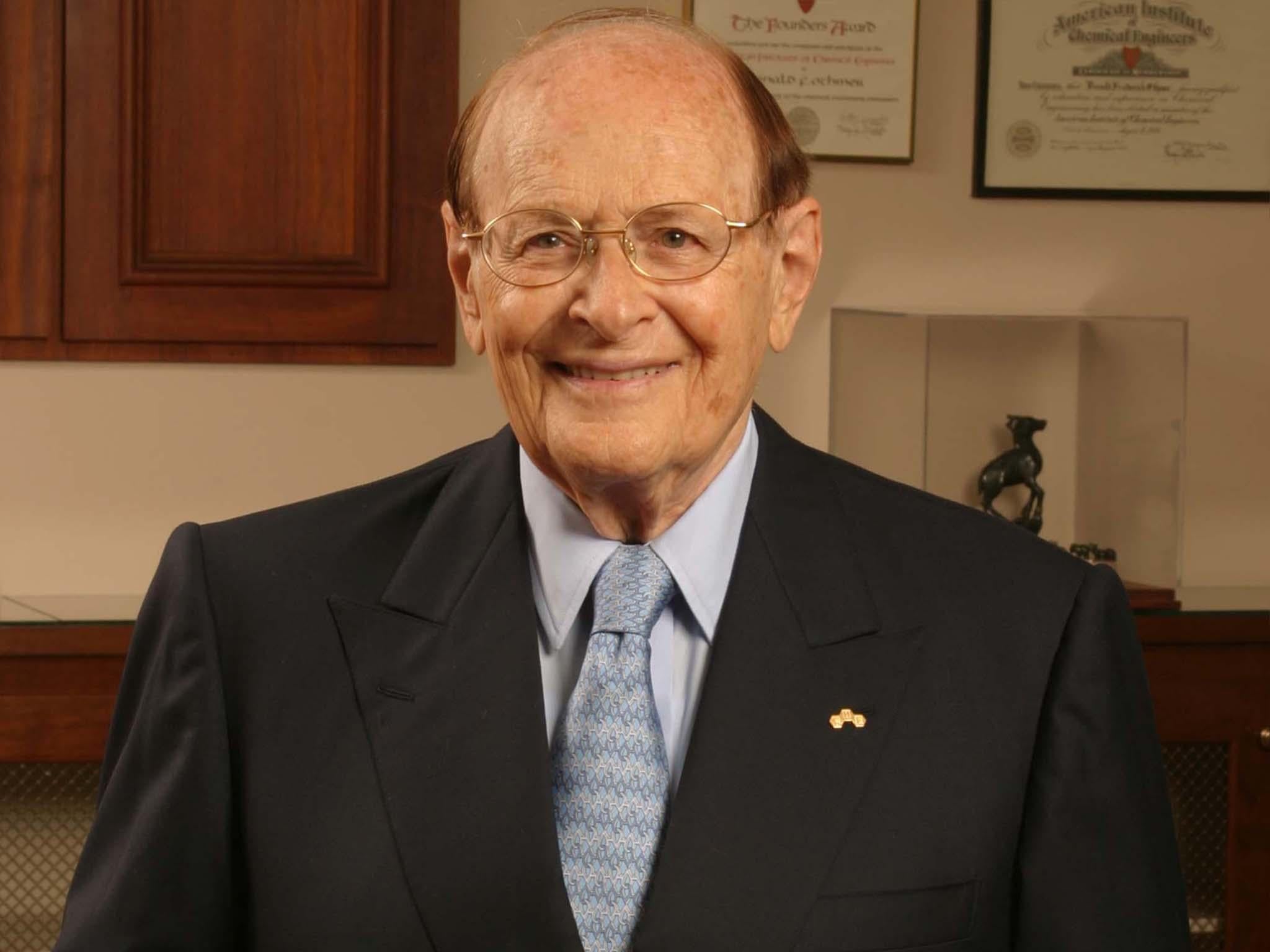George Rosenkranz: Scientist who fled the Nazis and whose work helped to develop the birth control pill
Rosenkranz’s research forever changed sexual politics by giving women control over their fertility

Your support helps us to tell the story
From reproductive rights to climate change to Big Tech, The Independent is on the ground when the story is developing. Whether it's investigating the financials of Elon Musk's pro-Trump PAC or producing our latest documentary, 'The A Word', which shines a light on the American women fighting for reproductive rights, we know how important it is to parse out the facts from the messaging.
At such a critical moment in US history, we need reporters on the ground. Your donation allows us to keep sending journalists to speak to both sides of the story.
The Independent is trusted by Americans across the entire political spectrum. And unlike many other quality news outlets, we choose not to lock Americans out of our reporting and analysis with paywalls. We believe quality journalism should be available to everyone, paid for by those who can afford it.
Your support makes all the difference.George Rosenkranz was a Hungarian-born chemist who helped to devise what he called the “molecular acrobatics” behind the birth control pill, producing a synthetic hormone that forever changed sexual politics by giving women control over their fertility.
Rosenkranz, who has died aged 102, was one of numerous scientists and advocates whose work led to the widespread availability of the pill, a drug that has been used in various forms by hundreds of millions of women in the US, where the first oral contraceptive was approved in 1960, and around the world.
“The pill was not the result of serendipity,” Rosenkranz once said. “On the contrary, it was the result of a long chain of events, with many individuals and team players involved.”
He conducted his research at Syntex, a pharmaceutical company based in Mexico City that he later led as chairman and chief executive. He had settled in Mexico after fleeing Europe along with other Jewish scientists during the Second World War: many of his relatives perished in the Holocaust.
From the earliest days of his career, Rosenkranz was fascinated by the possibility of making synthetic forms of naturally occurring hormones. In 1951, Syntex announced that scientists working under him had synthesised cortisone, a steroid hormone that reduces inflammation, using inedible yams found in Mexico. Earlier methods of making cortisone, which were vastly more laborious, required bile harvested from cattle.
Later that year, Rosenkranz and two colleagues – Carl Djerassi, an Austrian-born scientist and fellow refugee from Nazi Europe, and Luis Miramontes, a Mexican doctoral student – were credited with making norethindrone, a synthetic version of the hormone progesterone that is also called norethisterone.
Initially intended for a drug to prevent miscarriage, it later became the active ingredient in birth control pills. Rosenkranz credited Ludwig Haberlandt, an Austrian scientist, with identifying progesterone as a contraceptive in the 1920s.
In 1960, the Food and Drug Administration approved Enovid by the Searle pharmaceutical company, the first commercially available version of the pill. Similar drugs followed, including Syntex’s Norinyl in 1964, which helped turn the company into a juggernaut. When Rosenkranz joined Syntex, the company “was in shambles and nearly bankrupt”, he told the publication Pharmaceutical Executive. It was sold in 1994 for more than £3.9bn to Roche Holdings.
Gyorgy Rosenkranz was in 1916 in Budapest, where his father ran a dance studio. He studied at the Swiss Federal Institute of Technology in Zurich under Leopold Ruzicka, who shared the 1939 Nobel Prize in Chemistry. Rosenkranz received a chemical engineering degree in 1938 and a doctorate in technical sciences in 1940. Ruzicka obtained for Rosenkranz a professorship in Quito, Ecuador, according to Rosenkranz’s son. The Japanese attack on Pearl Harbour in 1941 and subsequent entry of the United States into the war cut short the journey, and Rosenkranz stopped in Havana. There he met and married Edith Stein, a Jewish refugee from Austria, in 1945.
Rosenkranz found work at a Cuban pharmaceutical company where he used sarsaparilla root from Mexico to make small amounts of the hormones progesterone and testosterone. That work piqued interest at Syntex, and he went to work for the firm in Mexico City. He became a Mexican citizen in 1949 and a US citizen when he was in his nineties.
An accomplished bridge player, Rosenkranz wrote more than a dozen books about the card game and was inducted in 2000 into the Hall of Fame of the American Contract Bridge League, which named him a Grand Life Master.
He and his wife were competing in a bridge competition in Washington in 1984 when Edith Rosenkranz was kidnapped at gunpoint at a hotel garage and held for nearly two days for a £785,000 ransom. Her abductors released her near the National Mall after receiving the ransom, which Rosenkranz, under the guidance of law enforcement authorities, deposited under a car in a parking lot in Alexandria, Virginia.
Rosenkranz’s survivors include his wife, two sons and nine grandchildren. Another son Gerardo died in 2011.
George Rosenkranz, chemist, born 20 August 1916, died 23 June 2019
© Washington Post
Join our commenting forum
Join thought-provoking conversations, follow other Independent readers and see their replies
Comments